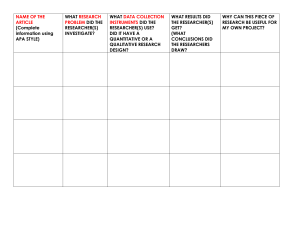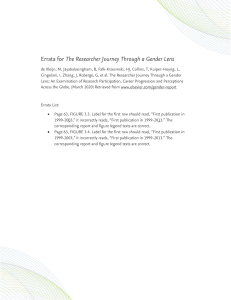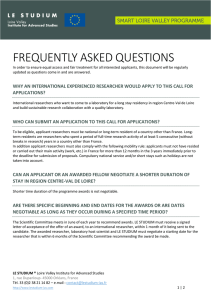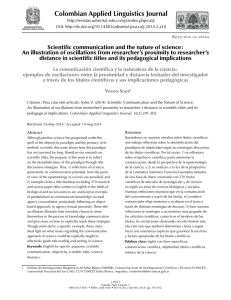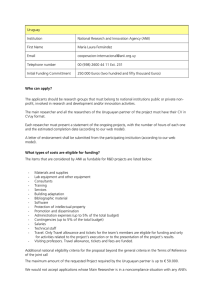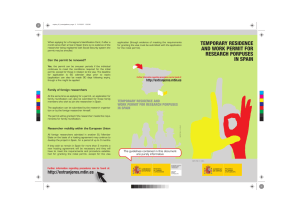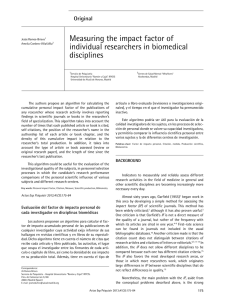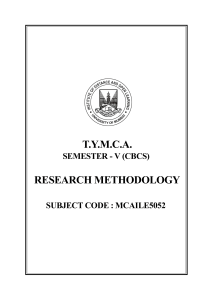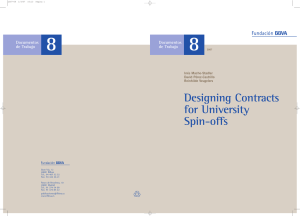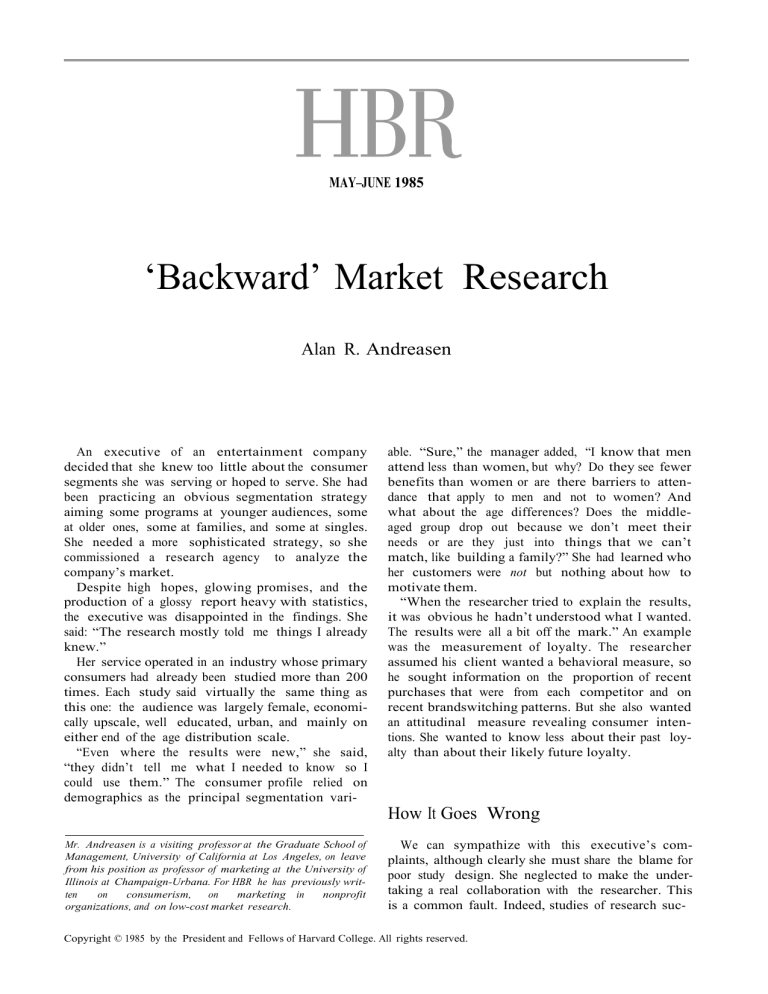
MAY–JUNE 1985 ‘Backward’ Market Research Alan R. Andreasen An executive of an entertainment company decided that she knew too little about the consumer segments she was serving or hoped to serve. She had been practicing an obvious segmentation strategy aiming some programs at younger audiences, some at older ones, some at families, and some at singles. She needed a more sophisticated strategy, so she commissioned a research agency to analyze the company’s market. Despite high hopes, glowing promises, and the production of a glossy report heavy with statistics, the executive was disappointed in the findings. She said: “The research mostly told me things I already knew.” Her service operated in an industry whose primary consumers had already been studied more than 200 times. Each study said virtually the same thing as this one: the audience was largely female, economically upscale, well educated, urban, and mainly on either end of the age distribution scale. “Even where the results were new,” she said, “they didn’t tell me what I needed to know so I could use them.” The consumer profile relied on demographics as the principal segmentation vari- able. “Sure,” the manager added, “I know that men attend less than women, but why? Do they see fewer benefits than women or are there barriers to attendance that apply to men and not to women? And what about the age differences? Does the middleaged group drop out because we don’t meet their needs or are they just into things that we can’t match, like building a family?” She had learned who her customers were not but nothing about how to motivate them. “When the researcher tried to explain the results, it was obvious he hadn’t understood what I wanted. The results were all a bit off the mark.” An example was the measurement of loyalty. The researcher assumed his client wanted a behavioral measure, so he sought information on the proportion of recent purchases that were from each competitor and on recent brandswitching patterns. But she also wanted an attitudinal measure revealing consumer intentions. She wanted to know less about their past loyalty than about their likely future loyalty. How It Goes Wrong o Mr. Andreasen is a visiting professor at the Graduate School of Management, University of California at Los Angeles, on leave from his position as professor of marketing at the University of Illinois at Champaign-Urbana. For HBR he has previously written on consumerism, on marketing in nonprofit organizations, and on low-cost market research. We can sympathize with this executive’s complaints, although clearly she must share the blame for poor study design. She neglected to make the undertaking a real collaboration with the researcher. This is a common fault. Indeed, studies of research suc- Copyright © 1985 by the President and Fellows of Harvard College. All rights reserved. cesses and failures point again and again to close collaboration between researcher and client as the single most important factor predicting a good outcome. The typical approach of the two parties starts with defining the problem. Then they translate the problem into a research methodology. This leads to the development of research instruments, a sampling plan, coding and interviewing instructions, and other details. The researcher takes to the field, examines the resulting data, and writes a report. The executive then steps in to translate the researcher’s submissions into action. She has of course already devoted some thought to application of the results. From my observation, however, before the research is undertaken the intended action is left vague and general. Managers tend to define the research problem as a broad area of ignorance. They say in effect: “Here are some things I don’t know. When the results come in, I’ll know more. And when I know more, then I can figure out what to do.” In my experience, this approach makes it highly likely that the findings will be off target. What I suggest is a procedure that turns the traditional approach to research design on its head. This procedure, a proven one, stresses close collaboration between researcher and corporate decision makers. It markedly raises the odds that the company will come up with findings that are not only “interesting” but also lead to actionable conclusions. There are only two cases in which research is not expected to be immediately actionable. The first is when the research is intended to be basic—that is, to lay the groundwork for later investigation or action rather than have any near-term impact. The second occasion is when the research is methodological— that is, it is designed to improve the organization’s ability to ask questions in the future. Except for these two instances, research should be designed to lead to a decision. Turned on Its Head The “backward” approach I advocate rests on the premise that the best way to design usable research is to start where the process usually ends and then work backward. So we develop each stage of the design on the basis of what comes after it, not before. The procedure is as follows: 1. Determine how the research results will be implemented (which helps to define the problem). 2. To ensure the implementation of the results, determine what the final report should contain and how it should look. HARVARD BUSINESS REVIEW May–June 1985 3. Specify the analyses necessary to “fill in the blanks” in the research report. 4. Determine the kind of data that must be assembled to carry out these analyses. 5. Scan the available secondary sources and/or syndicated services to see whether the specified data already exist or can be obtained quickly and cheaply from others. (While you are at it, observe how others have tried to meet data needs like your own.) 6. If no such easy way out presents itself, design instruments and a sampling plan that will yield the data to fit the analyses you have to undertake. 7. Carry out the field work, continually checking to see whether the data will meet your needs. 8. Do the analysis, write the report, and watch it have its intended effect. As one might expect, the first step is the most important. Step 1. As I mentioned before, to most managers the research “problem” is seen as a lack of important facts about their marketing environment. A manager may say, “The problem is I don’t know if formula A is preferred over formula B.” Or, “The problem is I don’t know if my distributors are more satisfied with my organization than my competitor’s distributors are with theirs, and if they aren’t, what they’re unhappy about.” In this way of defining the problem, the “solution” is simply a reduction in the level of ignorance. The data elicited may be very “interesting” and may give managers a great deal of satisfaction in revealing things they didn’t know. But satisfaction can quickly turn to frustration and disappointment when the executive tries to use the results. Take for example a life-style study done not long ago on over-the-counter drugs. Some respondents, who claimed they were always getting colds and the flu, were very pessimistic about their health. They frequently went to doctors but the doctors were never much help. They thought that OTC drugs were often very beneficial but they weren’t sure why. This information, together with other details, caused the researchers to label this group “the hypochondriacs.” What to do with these results? As is usually the case with segmentation strategies, there are quantity and quality decisions to make. The company has to decide whether to pump more marketing resources into the hypochondriac group than its proportion of the population would justify. The marketing VP might first say yes because the hypochondriacs are heavy drug users. But the picture is more complicated than that. Perhaps hypochondriacs are sophisticated buyers, set in their purchase patterns, and very loyal to 3 favorite brands. If so, money aimed at them would have little impact on market share. Light users, on the other hand, may have fragile loyalties and throwing money at them could entice them to switch brands. Of course, just the opposite might be true: the hypochondriacs, being heavy users, might prove very impressionable and responsive to compelling ads. On the qualitative side, life-style research could be much more helpful. Since it generates a rich profile describing each group’s jobs, families, values, and preferences, this research could tell the company what to say. But the frustrated manager is likely not to know where to say these things. There is no Hypochondriac’s Journal in which to advertise, and there may be no viewing and reading patterns that don’t apply to heavy users in general—hypochondriacs or not. A self-selection strategy could be tried wherein the company develops an ad speaking to hypochondriacs’ fears and worries in the hope that they will see the message and say to themselves, “Ah, they’re talking about me!” But nonhypochondriac heavy users who read the ad might say, “Well, if this product is really for those wimpy worrywarts, it certainly is not for sensible, rational me! I’ll take my patronage elsewhere.” In this case the research will be very interesting (fine fodder for cocktail party banter) but not actionable. But suppose that the company had first laid out all the action alternatives it might take after the study. If the marketing VP had made it clear that his problems were (a) whether to allocate marketing dollars differently and (b) whether to develop marketing campaigns aimed at particular, newly discovered segments, he would have set the project in a more appropriate direction. In the first case, discussions with the researcher would help the VP determine the criteria that would justify a different allocation. Naturally, before he can reach a decision the VP needs research on the likely responses of different segments to advertising and promotional money spent on them. In the second case, the manager needs to know whether there are indeed channels for best reaching these segments. Only by first thinking through the decisions to be made with the research results will the project be started with high likelihood of actionability. Step 2. After Step 1, management should ask itself: What should the final report look like so that we’ll know exactly what moves to make when the report is in? Now the collaboration between the researcher and the manager should intensify and prove dynamic and exceedingly creative. Scenarios are a good technique for developing ideas for the contents of the report. The initiative 4 here lies with the researcher, who generates elements of a hypothetical report and then confronts management with tough questions like: “If I came up with this cross-tabulation with these numbers in it, what would you do?” The first payoff from this exercise arises from improvement of the research itself. These results can take us forward by sharpening the decision alternatives and backward by indicating the best design for the questionnaire or how the analysis of the findings should be carried out. The forward effect is evident in this case: A product manager, marketing a high-priced convenience good, is considering cancellation of a multiple-purchase discount because she thinks that most people taking advantage of it are loyal customers who are already heavy users, are upscale, and are largely price inelastic. Therefore, she speculates, the discount mainly represents lost revenue. To decide this question, one must of course predict the responses of old and new customers to the elimination of the discounts. The researcher hypothesizes tables showing various results. Suppose the first iteration shows long-time customers to be price inelastic and new customers to be price elastic. This result suggests to the product manager the advisability of forgoing no discounts except a one-time offer to consumers who have never tried the product. In considering this alternative, the manager will realize that before she can reach a decision she needs to know whether potential new customers can be reached with the special offer in a way that will minimize (or, better, foreclose) purchases at a discount by longtime customers. This new formulation of the decision leads to a discussion of results set out in another set of dummy tables showing responsiveness to the onetime discount by past patron behavior. Other tables would then reveal what television shows various consumer segments watch and what they read or listen to, which will indicate whether they are differentially reachable. And so goes the process of recycling between the decision context and the research design. The recycling will reveal what research is needed. Sometimes the researcher will present contrasting tables or regression results pointing in a certain direction, only to discover that management is most likely to take the same course of action no matter what the results. This is usually a prima facie case for doing away with that part of the research design altogether. Participation in the design decisions has other advantages. It serves to co-opt managers into supporting the work and deepen their understanding of many of the details of the research. That understanding HARVARD BUSINESS REVIEW May–June 1985 Es bueno para no llevarse sorpresitas Es bueno para no llevarse sopresas Con el backward approach, las expectations se visibilizan de forma mas temprana, de lo contrario de los clientes pudieron haber salido pero en un punto muy avanzado del proceso permits the researcher to simplify the report immeasurably. Working with contrasting, hypothetical tables can make the manager eager for the findings and unlikely to be startled by surprising results. Participation will also help reveal to management any limitations of the study. In my experience, managers are often tempted to go far beyond research “truth” when implementing the results, especially if the reported truth supports the course of action they prefer to take anyway. Step 3. The form of the report will clearly dictate the nature of the analysis. If management is leery of multivariate analysis, the researchers should design a series of step-by-step cross-tabulations. If management is comfortable with the higher reaches of statistics, the researcher can draw out some of the more advanced analytic procedures. In general, however, the analysis phase should be straightforward. If the exercise of scenario writing has gone well, the analysis should amount to little more than filling in the blanks. Step 4. The backward approach is very helpful in data gathering. One large electronics manufacturer wanted to gauge young consumers’ knowledge of and preferences for stereo components. Not until the researcher had prepared mock tables, showing preference data by age and sex, did the client’s wishes become clear. By “young” the client meant children as young as ten. Moreover, the client believed that preteens, being a very volatile group, undergo radical changes from year to year, especially as they approach puberty. Design plans to set a low-age cutoff for the sample at 13 and to group respondents by age category— such as 13 to 16 and 17 to 20—went out the window. If the researcher had been following the usual design approach, the client’s expectations may not have surfaced until the study was well under way. Backward design can also help determine the appropriateness of using strict probability sampling techniques. If, for example, management wants to project certain findings into some universe, the research must employ precise probability methods. On the other hand, if the client is chiefly interested in frequency counts (say, of words used by consumers to describe the company’s major brands or of complaints voiced about its salespeople), sampling restrictions need not be so tight. In my experience, researchers often build either too much or too little sampling quality for the uses the company has in mind. Similarly, scenario writing will usually also reveal that management wants more breakdowns of the results, requiring larger sample sizes or more precise stratification procedures than initially planned. Through simulating the application of the findings, the final research design is much more likely to meet management’s needs and permit low field costs. Steps 5–8. The first four steps encompass the major advantages of the backward technique. Steps 5 through 8 revert to a traditional forward approach that applies the research decisions and judgments made earlier. If all parties have collaborated well in the early stages, the last four steps will carry through what has already been largely determined. More Informed Decisions What I propose here is a technique that requires marketing executives to give up their valuable time so that market research can be made more valuable. Great benefits can accrue thereby: The organization can avoid research that will not benefit decision making. Research results that are produced will be actionable. Surprising conclusions can be anticipated and contingency plans developed. Sample designs will be only as sophisticated as the organization’s data needs warrant, and therefore more efficient. Sample sizes will be large enough (or stratified appropriately) to allow more precise analyses of the main subgroups of interest. Questions will be worded as management really wants them. Management, being closely involved in the research design, is more likely to support the implementation phases and take quick action on the research results when they finally become available. This procedure takes time for both managers and researchers. But determining where you want to go, then working backward to figure out how to get there, is likely to yield more valuable data leading to fruitful decisions. Se mencionan las ventajas de usar el modelo (backward design) que propone el autor y se vuelve a mencionar que el trabajo conjunto entre gerencia e investigador es clave para tener mejor respuesta, capacidad de acción HARVARD BUSINESS REVIEW May–June 1985 5
